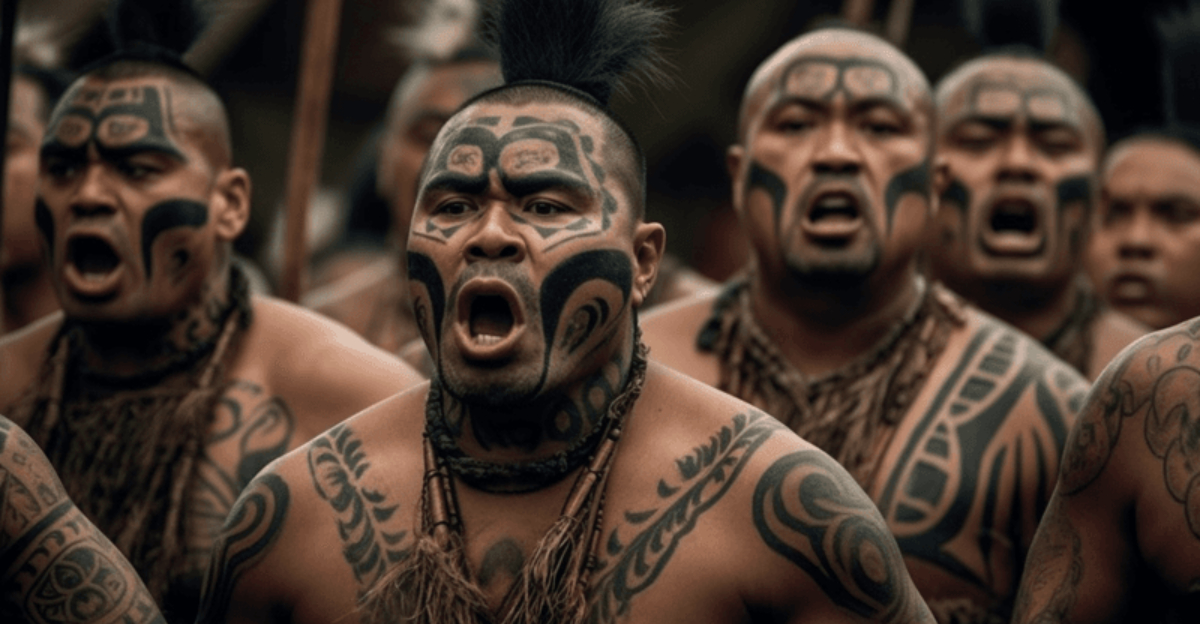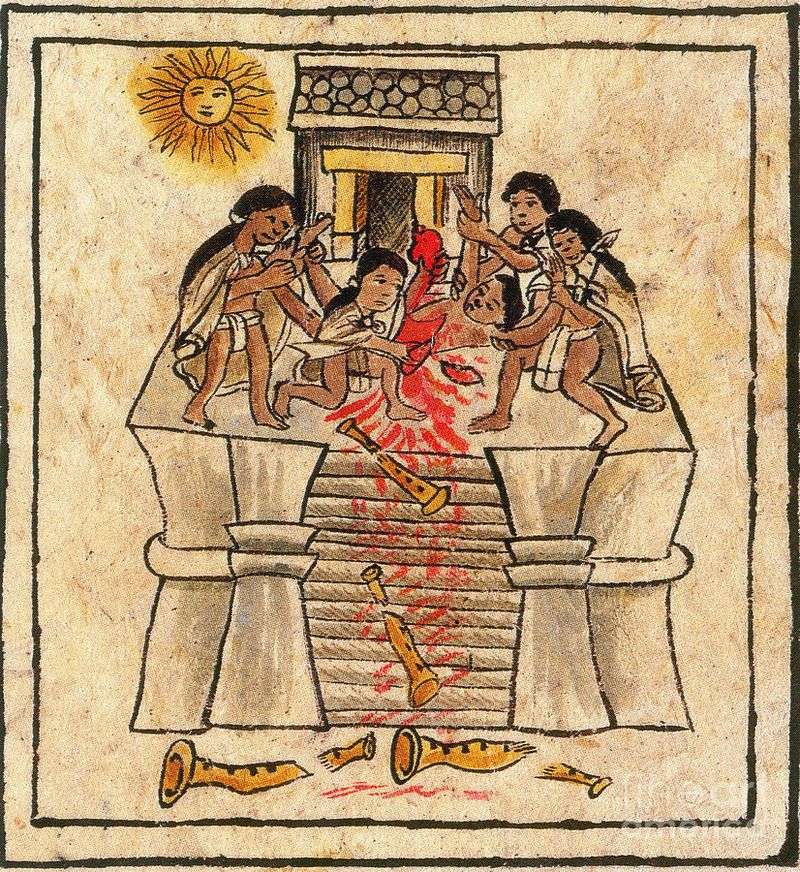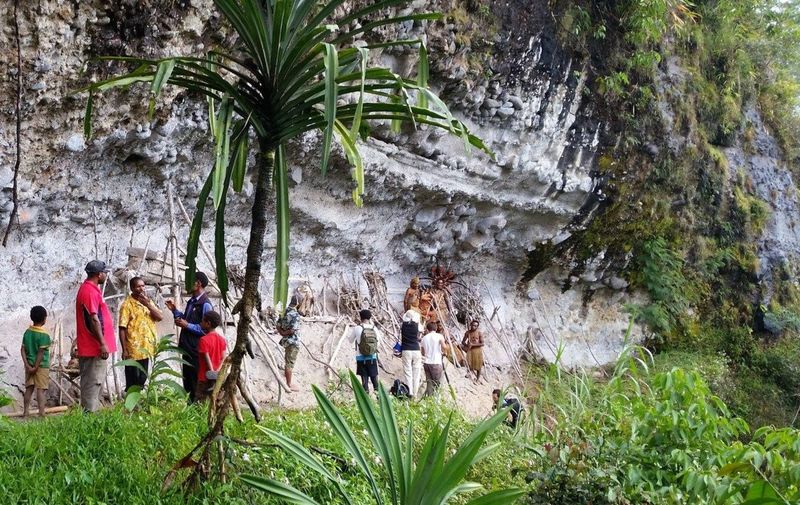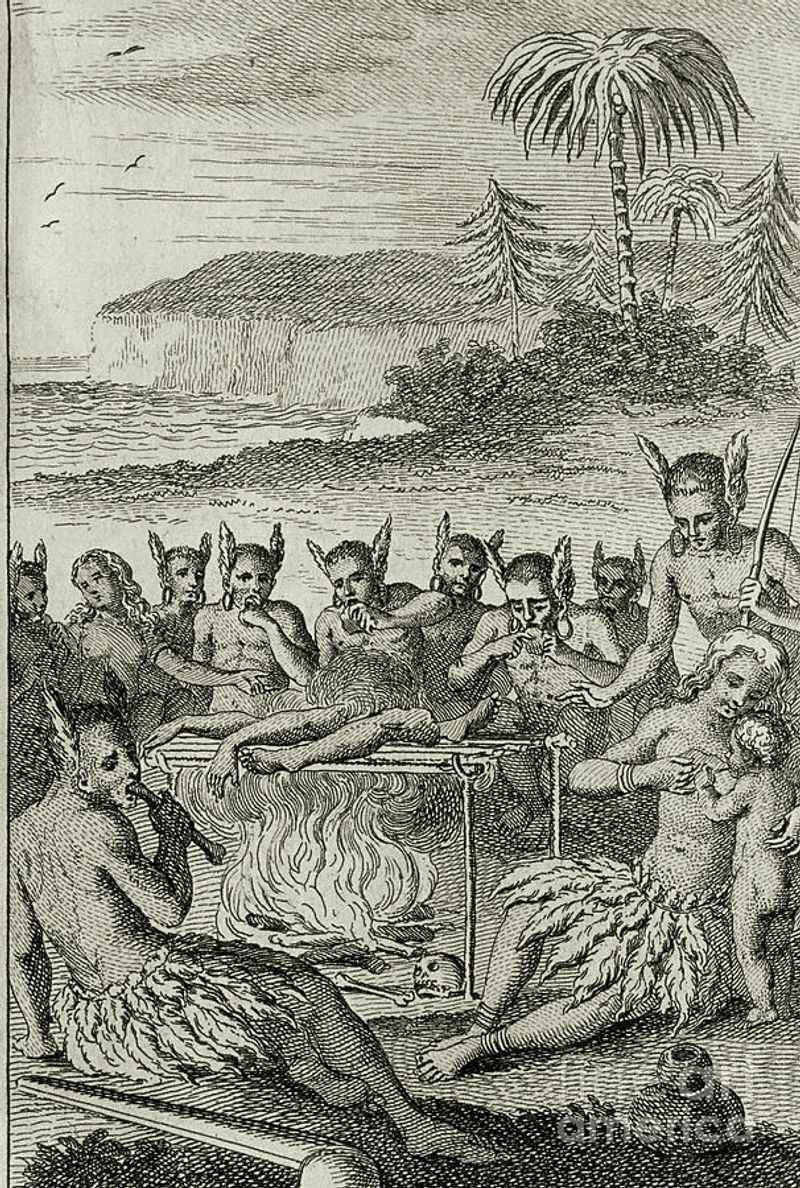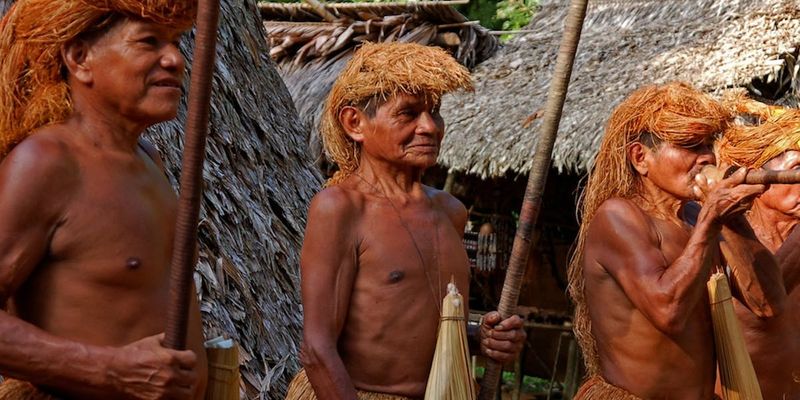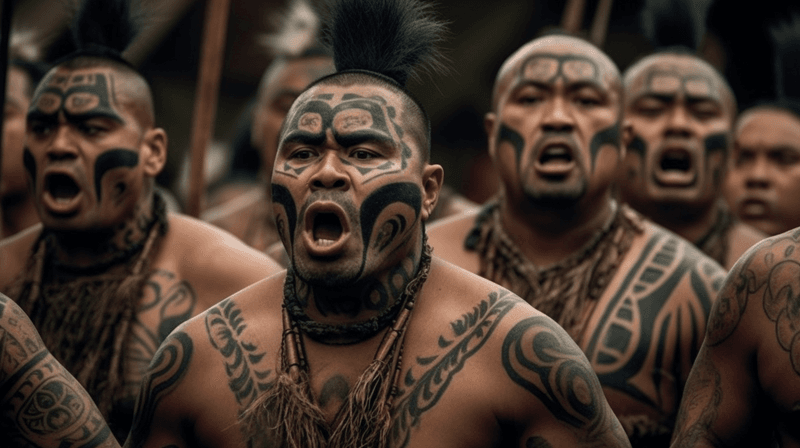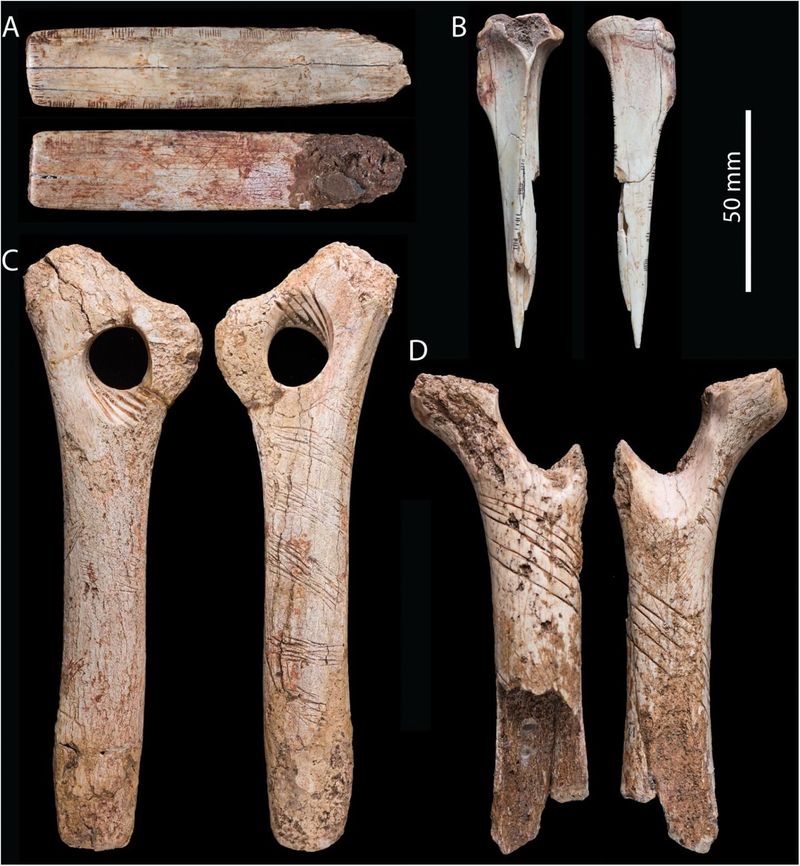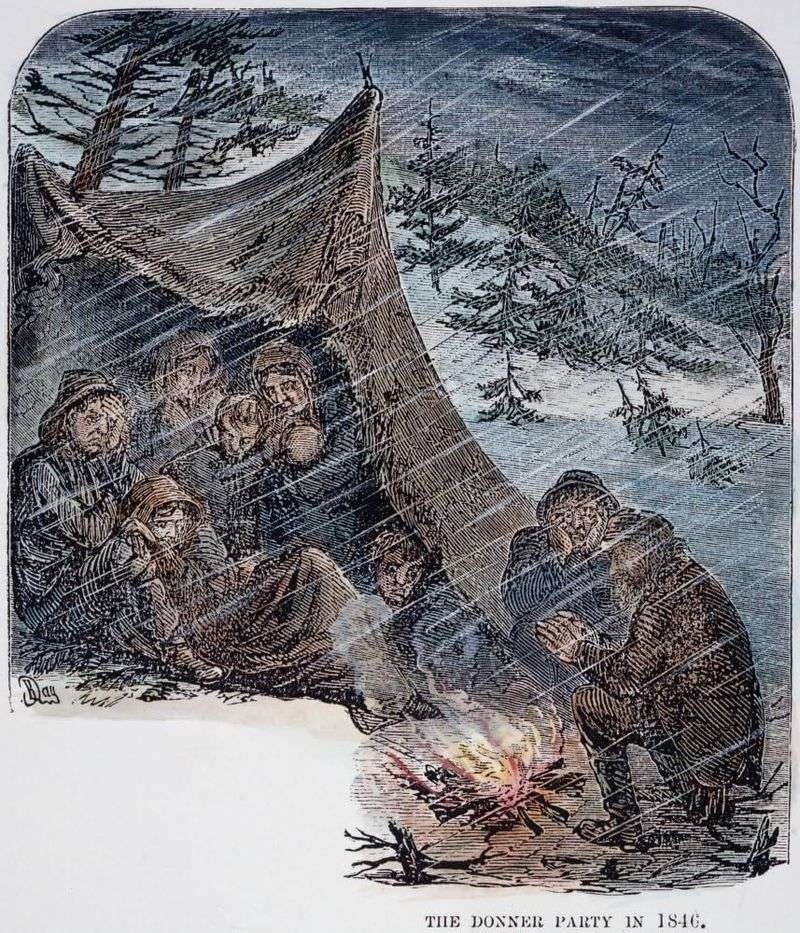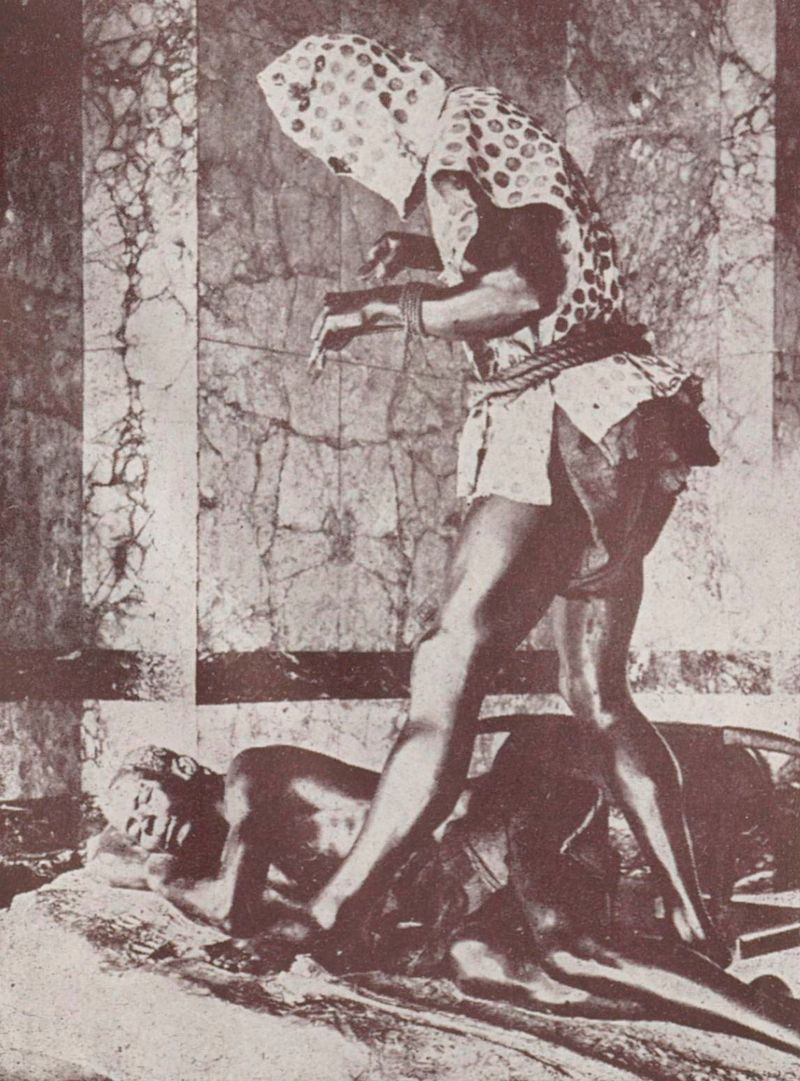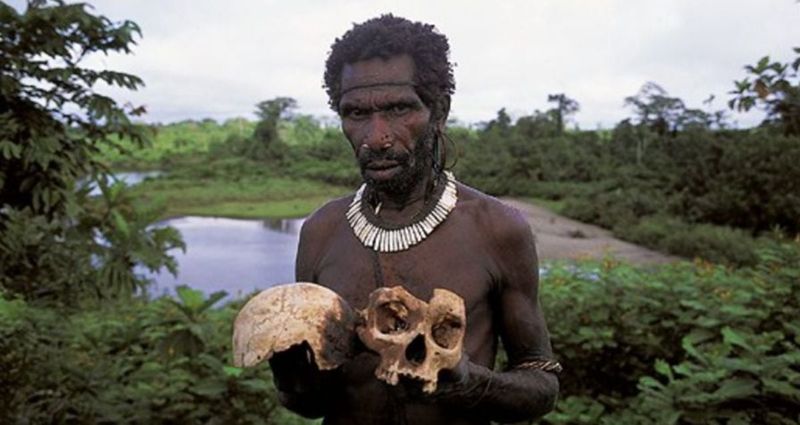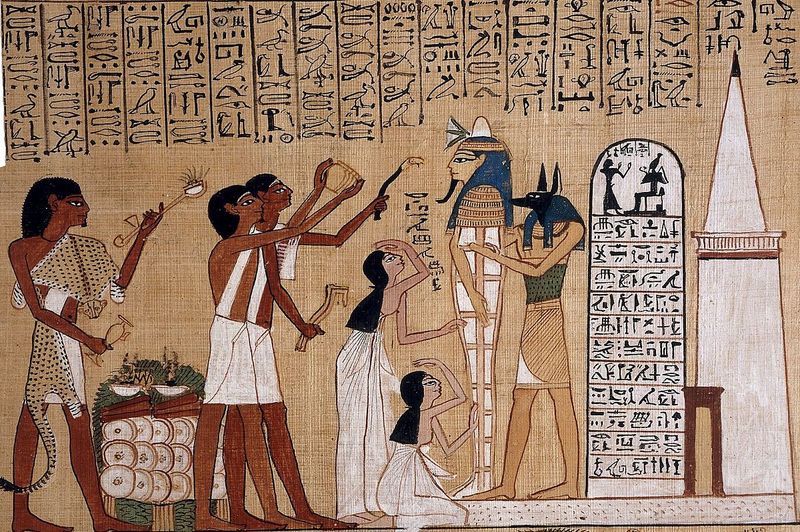Throughout human history, cannibalism has appeared in various cultures for reasons ranging from ritualistic practices to survival necessities. This blog post explores ten distinct cultures where cannibalistic practices were part of their historical narrative.
1. The Aztecs (14th–16th Century, Mexico)
In the heart of ancient Mexico, the Aztecs revered their gods through complex rituals. Ritual sacrifice was central to their belief system, and consuming the flesh of sacrificed victims was believed to honor deities like Xipe Totec. This act was not mere savagery but a ceremonial practice to ensure cosmic balance. Spanish conquistadors documented this with awe and horror, noting the skull racks, or tzompantli, used in these grim ceremonies. Among the nobility, it was a mark of prestige, intertwining faith, power, and fear. These practices ceased with the fall of the Aztec Empire.
2. The Fore Tribe (Papua New Guinea, 20th Century)
In the lush highlands of Papua New Guinea, the Fore tribe practiced a unique funerary ritual. Consuming the brains of deceased relatives was seen as an act of affection, helping to keep loved ones close even after death. Tragically, this loving tradition spread kuru, a devastating prion disease affecting the nervous system. The government intervened in the 1950s, banning the practice and gradually eradicating the disease. Despite the morbid nature of the ritual, it highlights the deep familial bonds within the tribe and the lengths they would go to honor their ancestors.
3. The Caribs (Pre-Columbian Caribbean)
Emerging as fierce protectors of the Caribbean, the Caribs were reputed to consume their foes. Spanish explorers, possibly exaggerating, claimed this was to absorb enemies’ strength. This intimidating tactic fostered fear among their adversaries, enhancing their reputation as formidable warriors. Today, the word “cannibal” traces its roots to “Caribal,” Columbus’s name for them. While some accounts may be embellished, the Caribs’ impact on cultural narratives remains undeniable. Their story is one of both myth and reality, blending historical fact with legend.
4. The Wari’ People (Brazil, Until 1960s)
Deep in the Amazon, the Wari’ people held a unique perspective on death. Consuming the dead was not an act of savagery but of respect, ensuring the spirits peacefully transitioned. Burial was considered disrespectful, as they believed it trapped spirits in a cold, dark place. Ashes were often mixed into banana soup, symbolizing the integration of the deceased into the community’s life. This practice, while startling to outsiders, underscores the Wari’s profound connection to their ancestors and the cycle of life and death.
5. The Maori (New Zealand, Pre-Colonial Era)
In the verdant lands of New Zealand, the Maori practiced cannibalism as a demonstration of power and revenge. Known as utu, it was a way to humiliate enemies and absorb their mana, or spiritual essence. European settlers recorded these practices, often with a mix of fascination and fear. The Maori’s approach to warfare was deeply spiritual, intertwining physical conquest with metaphysical gain. This tradition, though no longer practiced, remains a testament to their rich cultural heritage and the warrior ethos that defined them.
6. The Ancient Britons (Iron Age Europe)
In the mysterious world of Iron Age Britain, evidence suggests that cannibalism might have been part of survival or ritual. Bones unearthed in Alveston Cave show signs of butchering, sparking debates about their purpose. Was it a response to famine or a sacred druidic rite? While the exact motivations remain shrouded in mystery, it offers a glimpse into a time where survival often intertwined with the spiritual. This enigmatic practice adds another layer to the complex tapestry of ancient British culture.
7. The Donner Party (1846–47, USA)
In the harsh winter of 1846, the Donner Party found themselves trapped in the Sierra Nevada. As food supplies dwindled, they faced an unimaginable choice—resort to cannibalism or perish. This grim decision led to the survival of 48 out of the 87 pioneers, etching their story into American folklore. It’s a haunting reminder of the desperate measures humans can take when faced with extreme adversity. The tale of the Donner Party continues to capture the imagination, reflecting the thin line between civilization and survival.
8. The Leopard Men (West Africa, Early 20th Century)
Within the dense jungles of West Africa, the Leopard Men cult operated in secrecy. Members donned leopard skins, believing that consuming human flesh granted them mystical powers and invincibility. Their reign of terror was marked by fear and mystery, as colonial authorities struggled to control them. The cult’s power waned with colonial crackdowns, yet their legacy persists in the annals of African mysticism. This group embodies the intersection of belief, power, and fear, captivating imaginations with tales of their enigmatic rituals.
9. The Korowai (Indonesia, Present-Day Allegations)
Nestled in the remote jungles of Indonesia, the Korowai tribe remains a subject of fascination and controversy. Allegations persist that they partake in cannibalism as a form of justice against khakhua, or witches. While some anthropologists argue it survives as a cultural deterrent, others suspect exaggeration for tourism. This mysterious tribe continues to intrigue researchers and travelers alike. Their practices, real or imagined, highlight the complexities of cultural preservation in an ever-connected world, where tradition meets modernity.
10. Ancient Egyptian Pharaohs (Ritual Symbolism)
In the grand temples of ancient Egypt, rituals held deep symbolic meaning. Texts describe gods partaking in the consumption of Osiris’s body, a metaphor for divine power and regeneration. Some scholars speculate that early pharaohs might have engaged in symbolic cannibalism to emulate these myths. While no direct evidence exists, this possible practice reflects the Egyptians’ profound spirituality and belief in the divine. These rituals, steeped in symbolism, continue to intrigue historians and fuel debates about the intersection of myth and reality.
